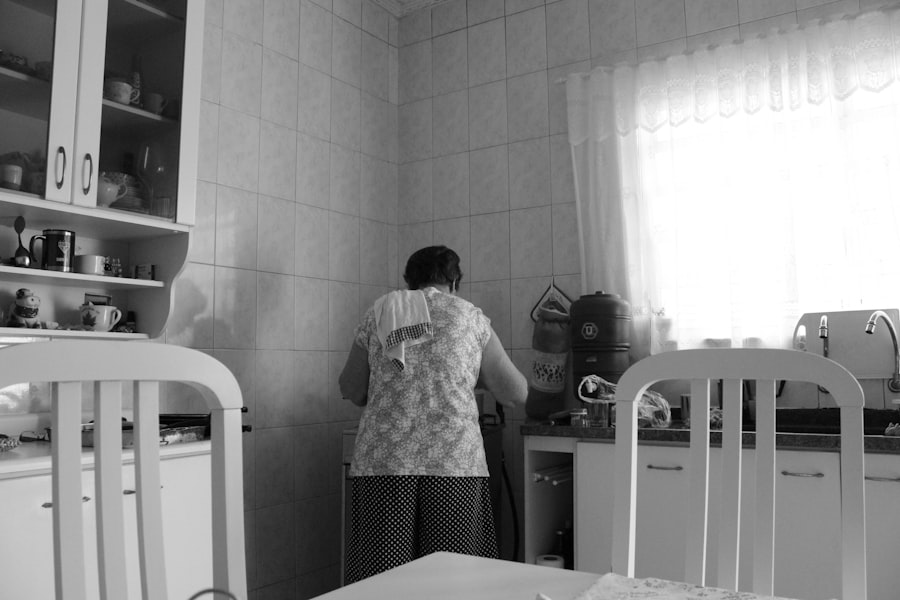As you delve into the world of nursing homes, you may find yourself confronted with a pressing issue that has been gaining attention in recent years: the understaffing crisis. This situation is not merely a statistic; it represents a significant challenge that affects the quality of care provided to some of society’s most vulnerable individuals. With an aging population requiring more specialized care, the demand for nursing home services has surged.
You might wonder how this crisis has developed and what it means for those who rely on nursing homes for their daily needs. The reality is that understaffing in these facilities can lead to inadequate care, increased health risks, and a diminished quality of life for residents.
As you explore this issue further, you will uncover the multifaceted nature of understaffing, its causes, and its far-reaching consequences on both residents and staff alike.
Key Takeaways
- Understaffing in nursing homes severely affects the quality of care and resident well-being.
- Low wages, poor benefits, and high burnout rates contribute significantly to staffing shortages.
- Recruitment and retention challenges exacerbate the understaffing crisis in the industry.
- Adequate staffing levels and proper training are essential for delivering quality care.
- Government regulation and investment in staff support are key to improving nursing home staffing.
The Impact of Understaffing on Residents
When you consider the implications of understaffing in nursing homes, the most immediate concern is the impact on residents. With fewer caregivers available, the level of attention and care each resident receives diminishes significantly. You may find that basic needs such as bathing, feeding, and medication management are often neglected or delayed.
This lack of timely care can lead to serious health complications, including infections, malnutrition, and even preventable hospitalizations. Moreover, the emotional toll on residents cannot be overlooked. You might imagine the feelings of isolation and neglect that can arise when caregivers are stretched too thin.
Residents may experience increased anxiety and depression as they grapple with the reality of being in a facility where their needs are not adequately met. The quality of life for these individuals is severely compromised, leading to a cycle of decline that can be difficult to reverse.
The Causes of Understaffing in Nursing Homes

As you investigate the root causes of understaffing in nursing homes, you will discover a complex interplay of factors at work. One significant contributor is the overall perception of nursing home jobs as low-status positions. Many individuals view these roles as undesirable due to the demanding nature of the work and the emotional toll it can take.
This stigma discourages potential candidates from pursuing careers in this field, exacerbating the staffing shortages. Additionally, you may find that financial constraints play a crucial role in this crisis. Many nursing homes operate on tight budgets, often prioritizing profits over adequate staffing levels.
This focus on cost-cutting can lead to reduced hiring and increased workloads for existing staff, creating a vicious cycle that perpetuates understaffing. As you explore these causes further, it becomes clear that addressing them requires a multifaceted approach that considers both societal perceptions and economic realities.
The Role of Low Wages and Benefits in Understaffing
| Metric | Description | Impact on Understaffing | Example Data |
|---|---|---|---|
| Average Hourly Wage | Typical pay rate for entry-level positions | Lower wages reduce job attractiveness, leading to fewer applicants | 10 – 12 per hour |
| Employee Turnover Rate | Percentage of employees leaving within a year | High turnover increases vacancies and understaffing | 45% |
| Benefits Availability | Access to health insurance, retirement plans, paid leave | Lack of benefits discourages long-term employment | Only 30% of workers receive benefits |
| Job Vacancy Duration | Average time a position remains unfilled | Longer vacancy periods indicate difficulty in hiring due to low wages/benefits | 45 days |
| Employee Satisfaction Score | Survey-based rating of job satisfaction | Low satisfaction correlates with understaffing and turnover | 3.2 out of 5 |
When you examine the issue of understaffing more closely, one factor stands out prominently: low wages and inadequate benefits for nursing home staff. You may be surprised to learn that many caregivers earn wages that are not commensurate with the demanding nature of their work. This financial disparity makes it challenging to attract and retain qualified professionals who are essential for providing quality care.
You might also consider how limited benefits contribute to this problem. Many nursing home employees lack access to health insurance, retirement plans, and paid time off, which can deter individuals from pursuing long-term careers in this field. As you reflect on these issues, it becomes evident that improving compensation and benefits is crucial for fostering a stable workforce capable of meeting the needs of residents.
The Challenges of Recruitment and Retention in the Nursing Home Industry
As you explore the challenges surrounding recruitment and retention in the nursing home industry, you will encounter a myriad of obstacles that complicate efforts to build a robust workforce. One significant hurdle is the perception of nursing home work as emotionally taxing and physically demanding. You may find that many potential candidates are deterred by stories of burnout and high turnover rates among staff members.
Moreover, you might discover that inadequate training and support for new hires contribute to high attrition rates. When individuals enter the field without proper guidance or mentorship, they may quickly become overwhelmed by the demands of their roles. This lack of support can lead to feelings of frustration and disillusionment, prompting them to leave the profession altogether.
As you consider these challenges, it becomes clear that addressing recruitment and retention requires a comprehensive strategy focused on creating a supportive work environment.
The Impact of Burnout and High Turnover on Understaffing

As you delve deeper into the issue of understaffing, you will likely encounter the pervasive problem of burnout among nursing home staff. The emotional and physical demands placed on caregivers can lead to exhaustion and disengagement from their work. You may find that when staff members are overworked and underappreciated, their ability to provide quality care diminishes significantly.
High turnover rates exacerbate this issue further. When experienced staff members leave, they take with them valuable knowledge and skills that are difficult to replace. You might consider how this constant churn creates an unstable environment for both residents and remaining staff members.
The cycle of burnout and turnover not only affects morale but also contributes to ongoing understaffing challenges within nursing homes.
The Importance of Adequate Staffing Levels for Quality Care
As you reflect on the importance of adequate staffing levels in nursing homes, it becomes clear that they are essential for ensuring quality care for residents. You may recognize that sufficient staffing allows caregivers to spend more time with each resident, fostering meaningful relationships and promoting overall well-being. When staff members have manageable workloads, they are better equipped to address individual needs and provide personalized care.
Moreover, adequate staffing levels can lead to improved health outcomes for residents. You might consider how timely interventions and consistent monitoring can prevent complications and enhance overall quality of life. As you contemplate these factors, it becomes evident that investing in adequate staffing is not just a matter of meeting regulatory requirements; it is a fundamental aspect of providing compassionate and effective care.
Solutions for Addressing Understaffing in Nursing Homes
As you explore potential solutions for addressing understaffing in nursing homes, you will encounter various strategies aimed at improving workforce stability. One effective approach is increasing wages and benefits for nursing home staff. By offering competitive compensation packages, facilities can attract qualified candidates who are committed to providing quality care.
Additionally, you might consider implementing mentorship programs for new hires to help them acclimate to their roles more effectively. Providing ongoing training opportunities can also empower staff members to develop their skills and advance within the organization. As you reflect on these solutions, it becomes clear that fostering a supportive work environment is essential for building a dedicated workforce capable of meeting the needs of residents.
The Role of Government Regulation in Addressing Understaffing
When examining the issue of understaffing in nursing homes, it is essential to consider the role of government regulation in addressing this crisis. You may find that regulatory bodies set minimum staffing requirements aimed at ensuring adequate care for residents. However, enforcement of these regulations can be inconsistent, leading to ongoing challenges in maintaining appropriate staffing levels.
You might also explore how government funding can play a crucial role in supporting nursing homes as they strive to improve staffing conditions. Increased financial support can enable facilities to invest in their workforce by offering better wages and benefits or enhancing training programs. As you contemplate these regulatory aspects, it becomes evident that collaboration between government agencies and nursing home operators is vital for creating sustainable solutions.
The Importance of Investing in Staff Training and Support
As you consider the importance of investing in staff training and support, you will recognize that well-trained caregivers are essential for delivering high-quality care in nursing homes. You may find that comprehensive training programs equip staff members with the skills necessary to handle complex medical situations while also fostering empathy and compassion in their interactions with residents. Moreover, ongoing support for staff is crucial for preventing burnout and promoting job satisfaction.
You might reflect on how regular check-ins with supervisors or access to mental health resources can help caregivers navigate the emotional challenges inherent in their roles. By prioritizing training and support, nursing homes can cultivate a workforce that is not only skilled but also motivated to provide exceptional care.
The Future of Nursing Home Staffing: Opportunities for Improvement
As you look toward the future of nursing home staffing, there are numerous opportunities for improvement on the horizon. You may envision a landscape where innovative recruitment strategies attract diverse talent into the field while fostering a culture of respect and appreciation for caregivers’ contributions. Embracing technology could also play a role in streamlining operations and enhancing communication among staff members.
Furthermore, as society continues to recognize the importance of quality care for aging populations, there may be increased advocacy for policy changes aimed at improving staffing conditions in nursing homes. You might consider how collective efforts from stakeholders—families, caregivers, regulators, and advocates—can drive meaningful change within this industry. As you contemplate these possibilities, it becomes clear that addressing understaffing is not just an immediate concern; it is an opportunity to reshape the future of care for our elderly population.
Nursing homes across the country are facing significant staffing shortages, which can lead to inadequate care for residents. A related article that delves into the financial implications of these understaffing issues can be found at How Wealth Grows.
WATCH THIS 🛑 The Profit of Death: How Wall Street Took Over Senior Care
FAQs
Why are nursing homes often understaffed?
Nursing homes are frequently understaffed due to a combination of factors including low wages, high turnover rates, demanding work conditions, and a shortage of qualified healthcare professionals. Budget constraints and regulatory challenges also contribute to staffing shortages.
How does understaffing affect the quality of care in nursing homes?
Understaffing can lead to decreased quality of care, as fewer staff members are available to attend to residents’ needs. This can result in longer response times, increased risk of neglect, medication errors, and overall reduced attention to residents’ physical and emotional well-being.
What are the main challenges nursing homes face in hiring staff?
Challenges include competitive wages offered by other healthcare sectors, the physically and emotionally demanding nature of the job, limited career advancement opportunities, and sometimes negative public perceptions of nursing home work environments.
Are there regulatory requirements for staffing levels in nursing homes?
Yes, nursing homes are subject to federal and state regulations that set minimum staffing requirements. However, these requirements may not always reflect the actual care needs of residents, and enforcement can vary, contributing to understaffing issues.
What impact does understaffing have on nursing home employees?
Understaffing often leads to increased workloads, job stress, burnout, and job dissatisfaction among nursing home employees. This can further exacerbate turnover rates and make it difficult to maintain a stable workforce.
What measures can be taken to address understaffing in nursing homes?
Solutions include increasing wages and benefits, improving working conditions, offering training and career development opportunities, implementing better staffing models based on resident needs, and increasing funding to support adequate staffing levels.
How does the COVID-19 pandemic relate to nursing home staffing shortages?
The COVID-19 pandemic intensified staffing shortages due to increased health risks, staff illness, burnout, and heightened demand for care. It also highlighted the critical need for adequate staffing to ensure resident safety and quality care.
Is understaffing a problem unique to nursing homes?
While understaffing is a significant issue in nursing homes, it is also a challenge in other healthcare settings such as hospitals and home care services. However, nursing homes face unique challenges due to the long-term nature of care and the vulnerability of their residents.
